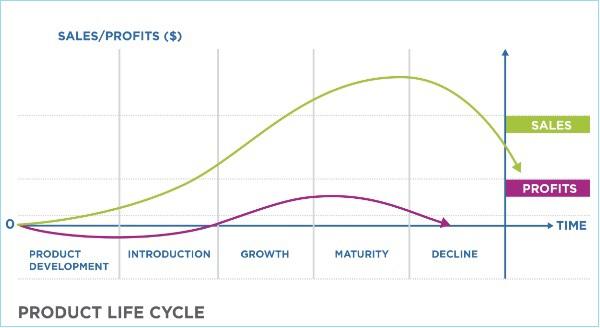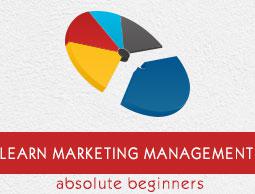Marketing Management - Product Life Cycle
Product life cycle is the timeline of demand for the product from its initial stage of introduction.

Let us now discuss the various stages of a product, starting from its innovation to its decline stage.
Stages of Product Cycle
Product life cycle can be defined as the life cycle of the product. It means the various stages a product sees in its complete life span.
Product life cycle comprises of the following four stages −
Let us start by describing the first stage we have in the product life cycle, that is, the introduction stage.
Introduction Stage
The product is introduced in the market in this stage; it is the initial stage of the product.
Sales of the product are low in this stage because there may not be a need of the product in the market.
The product may undergo brand trouble.
In this stage, there is very little or no profit.
The demand for the product is created and developed in this stage.
After this initial stage, the next stage of the product is the growth stage.
Growth Stage
In this stage, the demands and market share increases as well as competition emerges in the market.
Generally, the price remains constant in this stage.
Marketing and promotional expenses increase.
There is rapid increase in sales.
The manufacturing cost decreases so there is increase in profit margin.
It penetrates other market segment.
In the growth stage, there is a boom in the demand of the product and the profit increases substantially.
Maturity Stage
The price of the product is comparatively low, but the advertisement and promotion cost increases in this stage.
This stage remains for a comparatively longer duration.
In this stage, there is high competition.
Profit is decreased.
Sales growth can be divided into the following three categories in the maturity stage −
In growth, there is an increase in the demand of the product. In stability, the demand of the product remains constant. In decay, there is a slight decrease in the demand.
Decline Stage
There is a decrease in sales in this stage. Demand of product also decreases.
There is decrease in the price of the product.
Margins are lowered.
There is introduction of new product in market.
New strategies are implemented.
This is the final stage of the product. There is a decrease in demand and sales of the product.
Importance of Product Life Cycle
Product life cycle is an important tool for market forecasting, planning and control. Product life cycle is important in various ways. The situation of the product can be analyzed properly and changes can be made in order to increase profit. Some other important features are −
Helpful in formulating a proper product policy, production and pricing.
Helpful in modifying the marketing policy.
Helpful to the marketer regarding competition.
Cautions the management about the decline stage of the product.
New Product Development Process
If a company needs to launch a new product in the market, there is a different development process to be considered. The following are the factors contributing to new product development −
Demand in market
Acceptance of a product in the market
Acceptance of company strategy in market
Economic viability of the product
Changing the product as per consumer preference
Adapting as per technological development
Consideration of Government Policy
The development process has to consider these different perspectives for product development and has to adapt as per the market demand.
Stages of New Product Development
The following are the different stages of new product development −
Stage 1 − Generation of new product ideas
Stage 2 − Screening and evaluation of ideas
Stage 3 − Development and testing of concept
Stage 4 − Development of advertisement and promotion strategies
Stage 5 − Analysis of business
Stage 6 − Development of product
Stage 7 − Testing product in market
Stage 8 − Commercialization of the product
Development of a new product follows a long process, from the generation of an idea to the commercialization of the product in the market.



